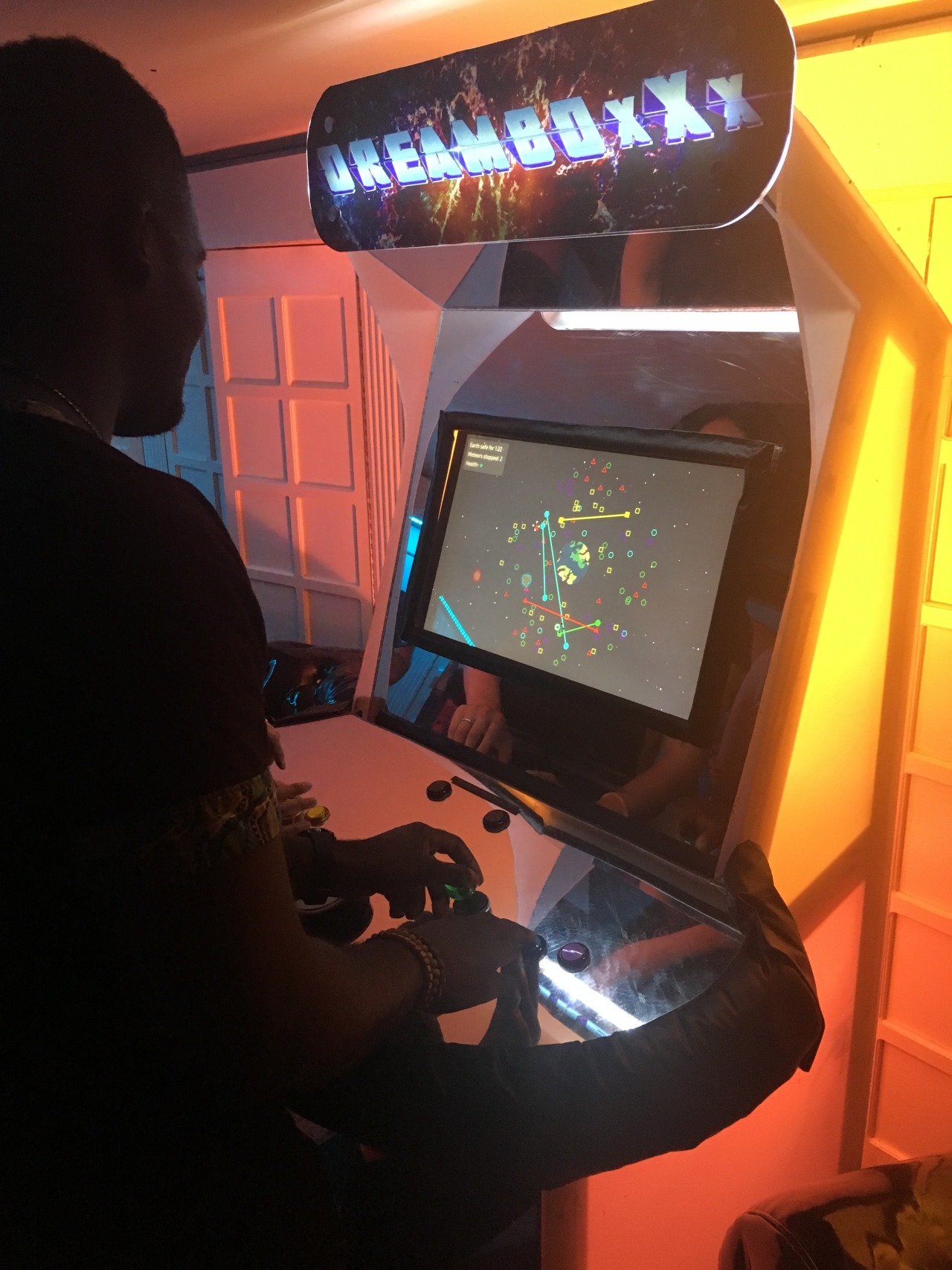
Featured Blog | This community-written post highlights the best of what the game industry has to offer. Read more like it on the Game Developer Blogs or learn how to Submit Your Own Blog Post
Prepping a Windows 10 Computer to be a Permanent Arcade Installation
A quick guide to setting up a Windows 10 computer to act as a permanent installation. Turning the computer on and off on a timer and preventing interruptions to your app.

[This was originally posted on my Tumblr]
Over at Death By Audio Arcade, we just launched our newest arcade machine: The DreamBoxXx. It’s a collection of games by queer developers that will live in Dreamhouse, a queer events space in Brooklyn.

Because this machine will be on display in a space not managed by us, we had to make it as air-tight and automatic as possible. I’m going to write a separate post on the software I wrote to launch and manage the games, but I wanted to post the generic steps that can be taken to ensure that any Windows 10 computer is exhibition ready.
What does “exhibition ready” mean? Well, the computer needs to turn itself on and off at set times, launch the program it is supposed to run at startup, and not get interrupted by things like Windows updates and other software nonsense.
Given that modern computers barrage you with lot’s of garbage meant to help users, this can be trickier than you might guess.
I wrote a guide for Death By Audio Arcade to use internally and thought I would post it here as well. This guide is heavily, heavily based on this excellent Windows 7 guide by Eva Schindling. Much of it is exactly the same but some things needed tweaking.
Setting up a Windows 10 Machine for exhibition
1. Turn off Sleeping
-Control Panel
-Hardware and Sound
-Power Options
-Change when the computer sleeps
-Set it all to “never”
2. Disable Windows Fast Startup
If you set a wake time in BIOS (more on that in a bit) but it doesn’t work, that may be because Windows Fast Startup is turned on. This makes the computer startup faster, but does it by hibernating instead of actually shutting down.
While in Power Options
-Select Change What Power Buttons Do
-click “Change settings that are currently unavailable”
-uncheck “Turn on fast startup
-save changes
3. Go to settings and turn the screen saver off
4. Disable updates
The guide above works for the most part, but this has changed since windows 7. I found this guide this guide instead. It involves editing the registry. I’m going to post the steps here in case that page goes down.
-Use the windows key + R keyboard shortcut to open the Run command.
-Type regedit, and click OK to open the Registry.
-Browse the following path:
HKEY_LOCAL_MACHINE\SOFTWARE\Policies\Microsoft\Windows
-Right-click the Windows (folder) key, select New, and then click Key.
-Name the new key WindowsUpdate and press Enter.
-Right-click the newly created key, select new, and click Key.
-Name the new key AU and press Enter.
-Inside the newly created key, right-click on the right side, select New, and click on DWORD (32-bit) Value.
-Name the new key AUOptions and press Enter.
-Double-click the newly created key and change its value using one of the following options:
2 - "Notify for download and notify for install.”
3 - “Auto download and notify for install.”
4 - “Auto download and schedule the install.”
5 - “Allow local admin to choose settings.”
-You probably want option 2
-Click OK.
-Close the Registry to complete the task.
5. Disable some startup processes
-Press the windows key and search for “startup”
-Find “See which processes startup automatically when you start Windows”
-Disable all of them
6. Set Apple Software Update to never check for updates
If you have Quicktime or anything else installed, you’ll want to open Apple Software Update and set it to never check.
7. Hide the taskbar
Right click the taskbar and select “Taskbar settings”
8. Add shortcuts/aliases to the startup folder
On Windows 7, this folder was easy to find. Now less so.
You’ll need to press Win-R for run prompt and enter “shell:startup”
You can drop in your AutoHotkey scripts or programs that you need to run on startup, but you are better off leaving them where they are and instead dragging shortcuts to this folder.
-Right click your script or program and select “Create Shortcut”
[Note: AutoHotkey is a scripting language for automating Windows. We use it a lot to create simple scripts that launch a game and reset the computer on a specific keypress. It is very useful for arcade machines]
9. Set the computer time
Make sure the system clock has the correct time. This is important to automate startup/shutdown
-Right click the time in the bottom right corner of the taskbar
-Select “Adjust date/time”
10. Bypass the login screen
By default, you need to enter your password on startup, but this can be turned off. Here are the steps in this guide to bypass this.
-Search for “netplwiz” in the start bar
-Uncheck the box labeled “Users must enter a user name and password to use this computer.”
-Hit OK
11. Setting the computer to shut down automatically
Eva Schindling’s guide above has this process with pictures and it is unchanged in Windows 10, but here are the steps:
-Control Panel
-System and Security
-Administrative Tools
-Task Scheduler
-Action Menu
-Create Basic Task
-Add title and description
-Task Trigger: select Daily
-Set your shut-down time and recurrence
-Action: select Start a program
-Program/script: C:\Windows\System32\shutdown.exe
-Add arguments: /s
-Click Finish
12. BIOS to turn the computer on at a set time
BIOS is firmware setting on the computer.
Enter BIOS by holding or tapping F12 while restarting
-If F12 does not work, look up how to enter BIOS. Different brands use different keys, but it is pretty much always holding or tapping a key while it restarts.
You are looking for a setting along the lines of “Resume by Alarm” or “Wake Settings.” For example, on the computer we used for the Dream BoxXx is was under advanced->S5 RTC Wake Settings
13. BIOS to turn the computer on when plugged in
In the BIOS settings, there will also often be an option to have the computer turn on when it is connected to power. The setting is often primarily for what to do after a power outage, but it can be very handy as it allows the entire system to come on as soon as a power strip is switched on. The name of the setting changes from machine to machine but it is typically something along the lines of “AC Back On” or “Action When Lost Power.”
14. Install Notepad ++
While not strictly necessary, having a lightweight but functional text editor will make your life much, much easier. Notepad++ is great because it adds a little “edit with Notepad++” option to any file you right click. You are going to edit a file on that computer at some point and you’ll be kicking yourself if you wind up using the default Notepad app.
https://notepad-plus-plus.org/download/
That’s it! Following those steps should give you a stable machine that is ready to run your project long term with minimal intervention!
Read more about:
Featured BlogsAbout the Author(s)
You May Also Like







.jpeg?width=700&auto=webp&quality=80&disable=upscale)








